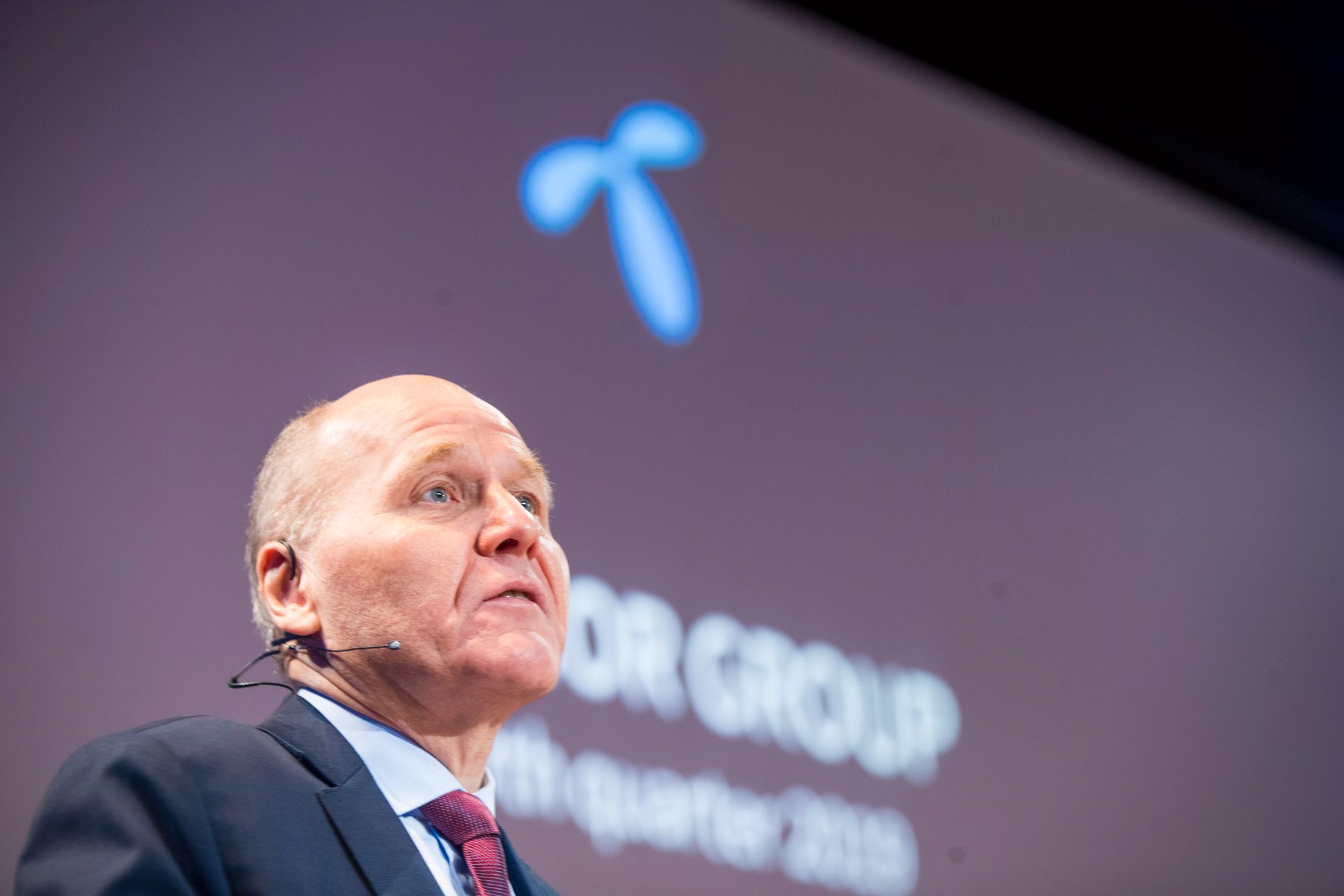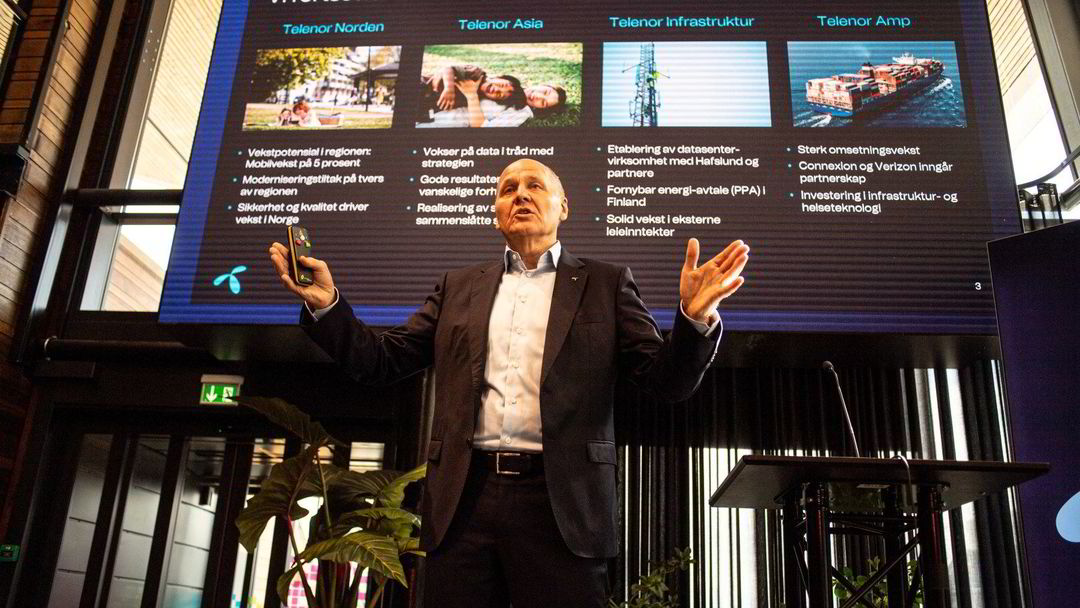The Norwegian telecom giant increased its subscriber count by nearly two million during the quarter, and is now seeing signs that Asian markets are gradually opening up after the pandemic.
TELENOR Director Sigve Brekke presents third-quarter results. Photo from a previous occasion.
Telenor’s after-tax profit fell to NOK 3.44 billion in the third quarter from NOK 5.45 billion at the same time last year.
Gross operating profit (EBITDA) decreased to NOK 12.70 billion from NOK 15.32 billion.
Up front, the interest rate on debt receivable was expected to be NOK 13.17 billion with a net profit of NOK 3.36 billion, according to data from Bloomberg.
Revenue will decrease to NOK 27.41 billion from NOK 28.41 billion in the third quarter of 2020.
“The current situation of COVID-19 in Asia is affecting the outcome, but despite this, we are seeing strong customer development as the number of subscribers increased by nearly 2 million in the quarter, and nearly 7 million so far this year,” the company wrote. in a press releases
Telenor had a total of 172 million mobile subscribers at the end of the third quarter.
In Norway, the number of mobile subscribers is almost unchanged at 2.76 million. In total, there is a marginal decrease in Norwegian revenue to NOK 6.35 billion, while the total operating profit is somewhat higher at NOK 3.40 billion.
Gradual improvement in Asia
Telenor is now seeing signs that Asian markets are gradually opening up after the pandemic. Subscriber growth and increased computer usage are important factors in Bangladesh and Pakistan.
In Thailand, the results were affected by the closures, but the country announced the reopening of tourist borders towards the end of the year.
Through the pandemic, Telenor has ramped up its work on strategic goals, including modernization and digitization initiatives.
“The result is that we are more efficient and robust today than we were at the start of the pandemic. Based on this year’s results so far and our expectations for the fourth quarter, we maintain expectations for 2021.”
In the second quarter, Telenor revised its 2021 forecast for organic subscription and traffic revenue growth of 0-1 percent and EBITDA growth of 0 to 2 percent. In the third quarter, there was a 2 percent decrease in membership EBITDA.
The investment level is still expected to be 15-16 percent of income.
Myanmar sales
On July 8, Telenor announced that it had sold its entire Myanmar business to Lebanon’s M1 Group for $105 million (900 million kroner) – just seven years after they first launched the country’s mobile network.
Telenor reduced its entire operations in Myanmar to zero in the first quarter – giving the telecom giant a loss of 6.5 billion accounts.
Until the military coup earlier this year, Myanmar was a growth adventure for Telenor.
Hundreds of civil law organizations have submitted a complaint to Telenor to the Organization for Economic Co-operation and Development over the sale. They noted that the Norwegian telecom giant in the sale could indirectly contribute to human rights violations in the country.
The reason is that the buyer, the Lebanese M1 group, according to the complainants, has close financial ties to the Myanmar Military Council.
Telenor defended itself by saying that it was the best alternative, after it was impossible to conduct a normal sale in light of the difficult situation in the country with “economic uncertainty, increased infection with corona, deterioration of the security situation and human rights”, in addition to challenging regulatory conditions.
Telenor last left the market in 2018 when the company sold its Eastern European operations for NOK 26.5 billion. The previous year, Telenor had left India after heavy losses.

“Web specialist. Lifelong zombie maven. Coffee ninja. Hipster-friendly analyst.”




